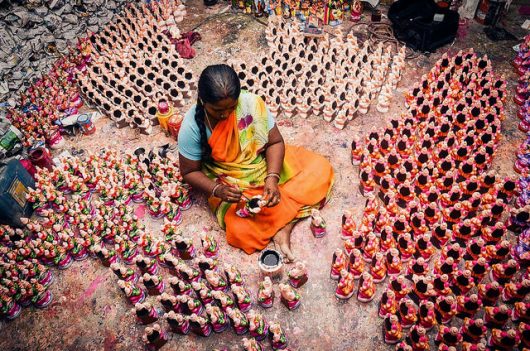
Women’s microenterprises have been criticized for generating less employment and for contributing little to the long term economic growth. All the research work that claimed the same seemed “statistically correct” and “data-driven”. However, not many talked about the management-based aid these microenterprises can readily use and generate economic value from. As reported by The Economic Times, microenterprises are one of the best segments for helping in the revival of the economy in the COVID aftermath. Understanding the much-valued place of women in it is more important now than ever. In the following paragraphs of this exploratory article, we see why these microenterprises are beneficial for empowering women as well as for employment generation.
Microfinance through Micro Financing Institutions(MFIs) allows citizens from lower-income groups to gain access to loans in small amounts without bringing banks & savings bank accounts in the picture (which are still a distant reality for many in India). In many instances, Self Help Groups are also established by NGOs to build a collective finance pool through the contributions of members. The loans through these institutions or groups are given out without collaterals and are mainly intended for building “Self Employment Microenterprises” (SEMs) or employment generating microenterprises.
Access to micro-credits for SEMs helps women along financial and psychological dimensions. They play a key role in helping women carve out financial freedom for themselves and in reducing dependency on the earning members of their families. Research has also shown that women running microenterprises tend to hire other females, thereby creating more space for women in their workplaces in the rural milieu. SEMs run by them majorly produce apparel, tobacco, and paper products among many others. However, key industries like health, transport and furniture lack women representation even in the context of microenterprises.
For gendered gaps in the economy to come down, it is necessary to encourage female entrepreneurship at micro levels as well. Studies on SEMs and Self help groups for generating financial support in certain states like Kerala say that women tend to use this financial support for meeting personal costs that require immediate redressal – like paying for their child’s needs, paying for existing loans, and so on, rather than generating employment opportunities through microenterprises. However, one should be aware of the fact that most MFIs charge high levels of interests for providing financial and business counselling and other training that can help microenterprises run by women grow.
For gaining access to micro-credits and using them effectively, women face constraints at three stages: expectations by family members for household work, discrimination on account of gender biases and stereotypes, and lack of training and management support. Also, on many occasions, it so happens that the loans acquired by women end up getting controlled by the other members of their households.
NGOs in general or NGOs acting as Microfinance Institutions can, and often do play a role in addressing these problems by bridging the gap between rural & remote areas and urban markets. Often due to a lack of access to information and due to educational disadvantage, it becomes necessary to keep women in socially disadvantaged sections updated about profitable microenterprise projects through a “value chain analysis”. Mechanisms should also be set up to reduce the number of intermediaries while products are transferred to the market to generate more income for the women involved in the microenterprise. This should be accompanied by help for developing the necessary skills like product development, accounting and maintaining records, packaging to set up and run them, and to cover transactional costs.
In fact, micro-funding and assistance from NGOs came in when the economic potential of non-agricultural work was realized in the 1970s. This assistance has been crucial from the start because a large section of the rural population faces difficulty with things like paperwork. To expect them to run micro-enterprises without functional support is a grossly irresponsible approach. Enabling women to run microenterprises also helps them protect their families from informal money-lenders who charge very high levels of interests and can lead to devastating consequences if left unpaid. It also protects them from the outright exploitation of the informal sector.
While trying to meet these intricate needs, NGOs driven by non-profit motives may have to collaborate with commercial and profit-driven organisations for both funds (for infrastructure)and market linkages. This might come off as a deviation from the ideal of rejecting frameworks that do not support women empowerment and the poor for some NGOs. Some also fear that this will introduce profit-motives in economic ecosystems that are vulnerable or still in nascent stages.
Microenterprises run by women are not a ‘one-fits-all’ solution, and they should not be looked at that way. But not tapping into their potential would be a sheer waste of economic power. Bringing management and skill development measures into the picture will encourage more funding to MFIs and Self Help Groups as the chances of returns will increase.


It looks like you’ve misspelled the word “upto” on your website. I thought you would like to know :). Silly mistakes can ruin your site’s credibility. I’ve used a tool called SpellScan.com in the past to keep mistakes off of my website.
-Rebecca